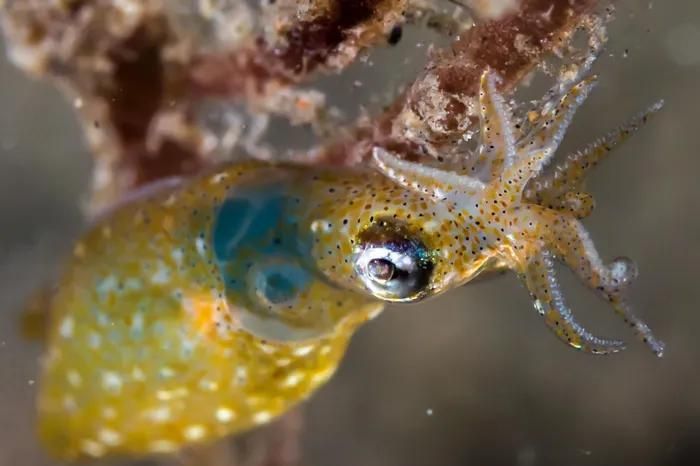Trees also know how to cry in pain when their flowers are cut off from their branches

According to a study published in 2023, this may be one of the ways that plants communicate their "suffering" to the world around them.
Organisms always have communication channels
"Even in a quiet area, there are actually sounds that we don't hear, and those sounds carry information," says evolutionary biologist Lilach Hadany of Tel Aviv University in Israel. animals can hear these sounds, so it's likely that a lot of acoustic interactions are going on."
"Plants have always interacted with insects and other animals, and many of these organisms use sound to communicate, so if plants didn't use sound it would be at a disadvantage (in evolution). )".
Stressed plants are not as passive as we think. They react with some pretty dramatic changes, one of the most recognizable (at least to us humans) being the release of some pretty powerful scents. They can also change their color and shape.
These changes may signal danger to other nearby plants, which in turn will increase their defenses; or attract natural enemies to deal with species that can harm plants.
However, whether plants emit other types of signals – such as sound – has not been fully explored. A few years ago, Hadany and colleagues discovered that plants can sense sound. The next logical question to ask is whether they can create it.
Can trees make sounds?
To find out, the researchers recorded tomato and tobacco plants under a number of conditions. First, they recorded unstressed plants to get a baseline. They then recorded which trees were dehydrated and which had their stems cut off. The first recordings took place in a soundproof chamber, then in a normal greenhouse environment.
They then taught the AI to distinguish between sounds made by unstressed plants, cut plants, and dehydrated plants.
The sound that plants emit is like a clicking sound at a frequency too high for humans to hear, detectable within a radius of more than a meter. Unstressed plants don't make much noise at all.
In contrast, stressed plants are much noisier, emitting an average of about 40 clicks per hour depending on the species. And water-starved plants have remarkable acoustic characteristics. They begin to click more frequently before there are obvious signs of dehydration, gradually increase as the plant becomes drier, and then subside as the plant wilts.
The algorithm can distinguish between these sounds as well as the plant species that emit them. And it's not just tomato and tobacco plants. The team tested a variety of plants and found that making sounds appears to be a fairly common activity of plants. Wheat, corn, grapes, cacti. have all been recorded to make noise.
But there are still some unknowns. For example, it is unclear how sound is produced. In previous research, dehydrated plants were found to exhibit cavitation, a process in which air bubbles in stem form expand and collapse. This is like when we crack our knuckles, it makes a popping sound.
We still don't know whether other damaging conditions other than dehydration, such as UV exposure, extreme temperatures, etc., can produce sound. We also don't know whether making sound is an adaptive development in plants.
However, it appears that some other organisms have learned to respond to the noise of diseased plants. Hadany said: 'For example, a caterpillar intending to lay eggs on a plant or an animal intending to eat a plant may 'listen' to the sounds of the plant to make its final decision.
But whether other plants sense and respond is unclear. Previous research has shown that plants can increase their drought tolerance in response to sound, so this certainly makes sense. And this is where the team is pointing to the next phase of their research.
Hadany asks: 'Now that we know plants make sounds, the next question is – 'who could be listening?' We are currently studying the responses of other organisms, both animals and plants, to these sounds. We are also exploring the possibility of identifying and interpreting sounds in natural environments.'
You should read it
- New plant species discovered in China
- How to customize sound effects on Mac OS
- 8 types of vegetables can be grown at home from the original stems
- How to download audio for Facebook videos on Facebook Sound Collection
- Fear of poisonous plants that corrode humans
- After nearly three decades, the scientific community has not been able to decipher the mysterious sound of only 2% of the population
 5 living 'fossils' on Earth
5 living 'fossils' on Earth Unique new species of squid, super small 1cm, hunts by sitting still
Unique new species of squid, super small 1cm, hunts by sitting still Top strange animals become their own natural enemies
Top strange animals become their own natural enemies Rare fish species live in the 'devil's cave', the number of which can be counted on the fingers of one hand
Rare fish species live in the 'devil's cave', the number of which can be counted on the fingers of one hand Close-up of a mantis capturing and killing a hummingbird with lightning speed
Close-up of a mantis capturing and killing a hummingbird with lightning speed 30 hornets massacred 30,000 bees in 3 hours
30 hornets massacred 30,000 bees in 3 hours